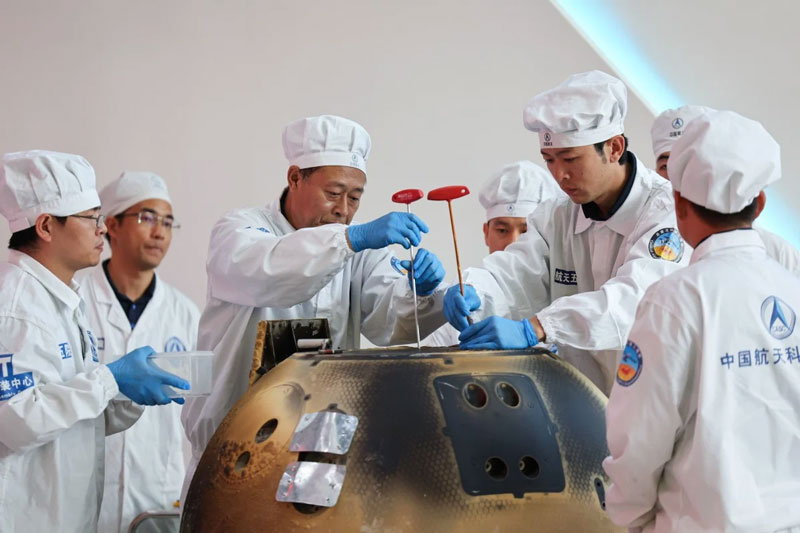Chinese scientists continue to reap the benefits of pioneering, reporting new discoveries made while studying samples of lunar soil from the far side of the satellite. The world’s first samples from the side of the Moon hidden from the earthly observer were delivered to Earth by the Chinese Chang’e-6 probe in June 2024. The first studies showed differences in the composition of the rocks on each side of the satellite, but common features were also found, as evidenced by the new work.

Image source: Xinhua
Analysis by remote sensing of the surface of the Moon on its far side led scientists to believe that volcanic activity there ceased quite a long time ago – about 4 billion years ago. Younger traces of volcanic activity, dating back to up to 2 billion years ago, were found on the visible side of the satellite. Evidence of this is provided by soil samples delivered to Earth by Soviet, American and, most recently, Chinese missions.
The relief and geology of the visible and far sides of the Moon have significant differences, and scientists are trying to understand the reasons for this phenomenon. It is assumed that the differences may be associated with the dynamics of volcanic activity. Volcanoes on the far side of the Moon went extinct a couple of billion years earlier than those on the visible side, which likely affected the composition of the rocks and the geology of the surface. This may also indicate less radioactive material in the mantle of the far side, which generated heat and contributed to the transfer of energy from the interior to the surface.
The Chang’e 6 probe took soil samples from the Apollo crater in the South Pole-Aitken Basin. Radiometric dating of isotope decay in the basalts showed that volcanic activity at the landing site ceased just 2.8 billion years ago, a surprising discovery for researchers. This suggests that volcanic activity on both sides of the Moon lasted for approximately the same amount of time and cannot explain the differences in their geology. However, the study of samples has just begun, and the main discoveries are yet to come.